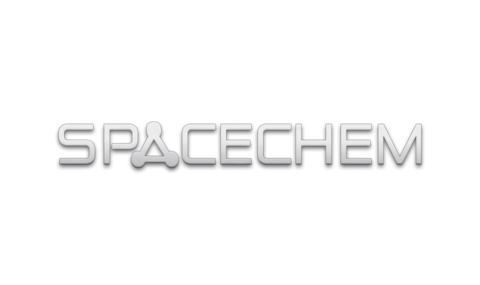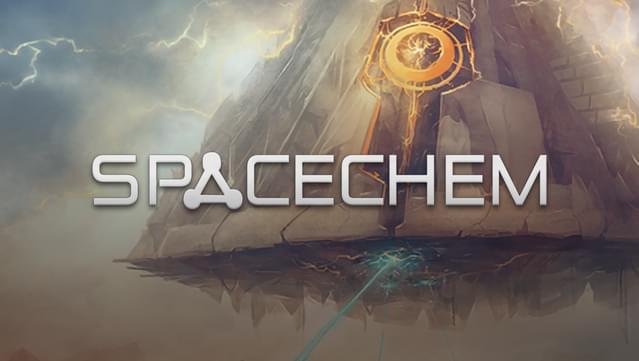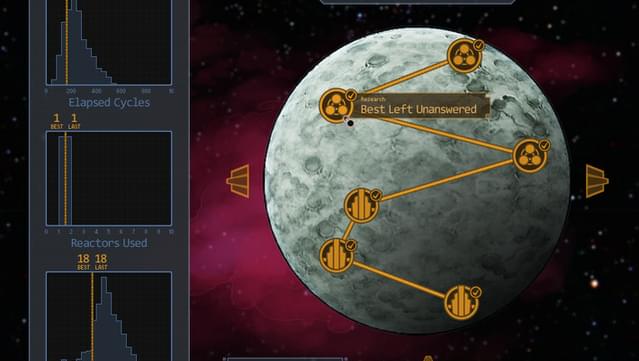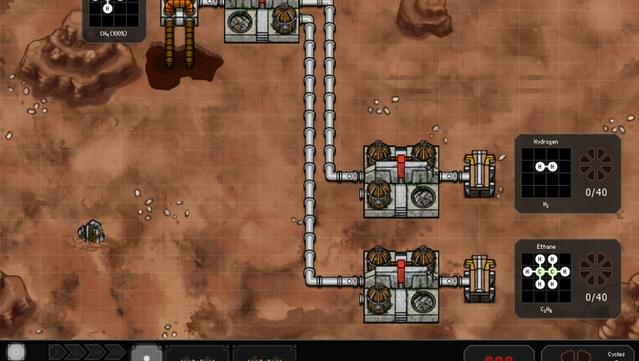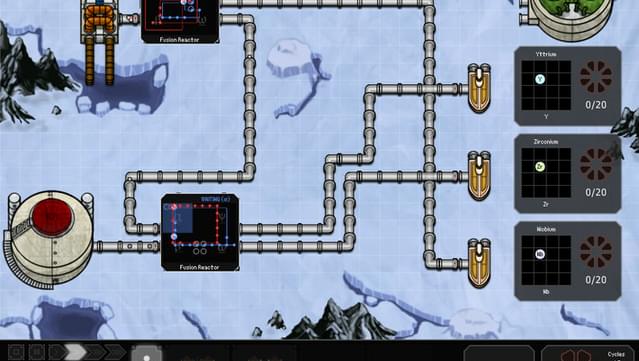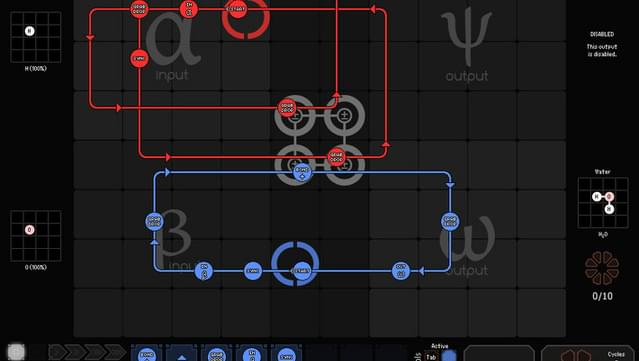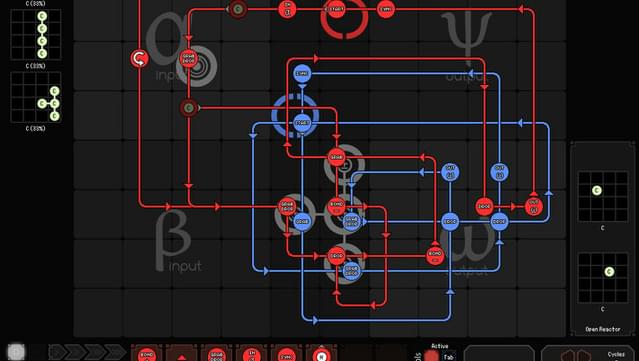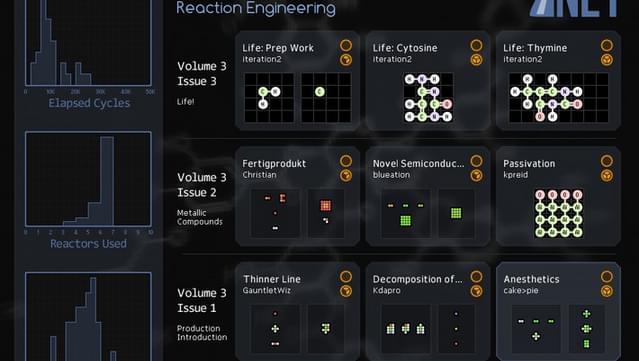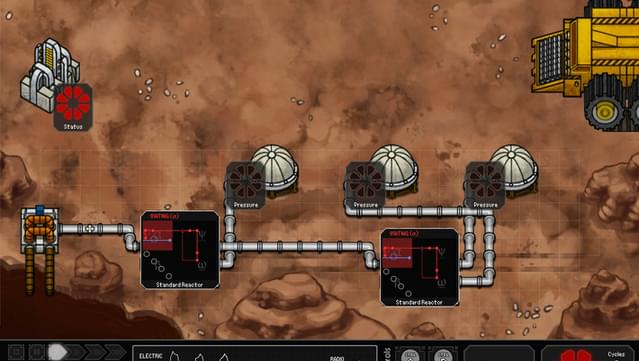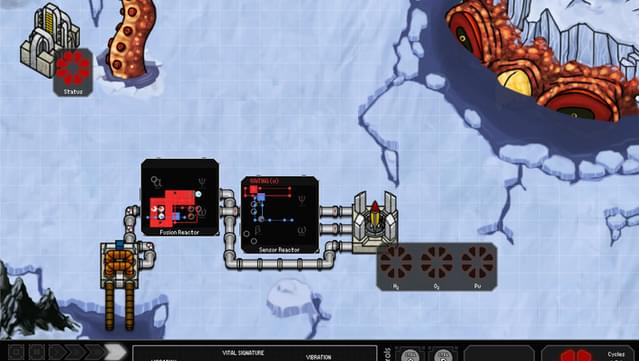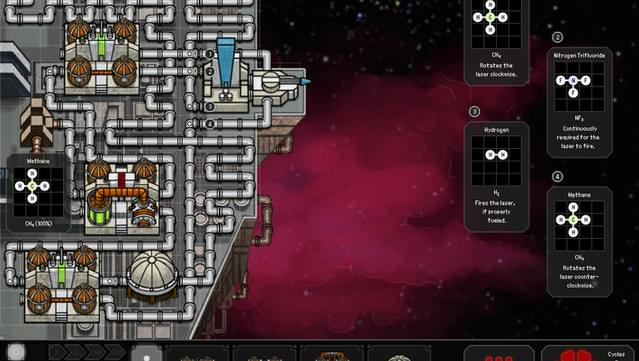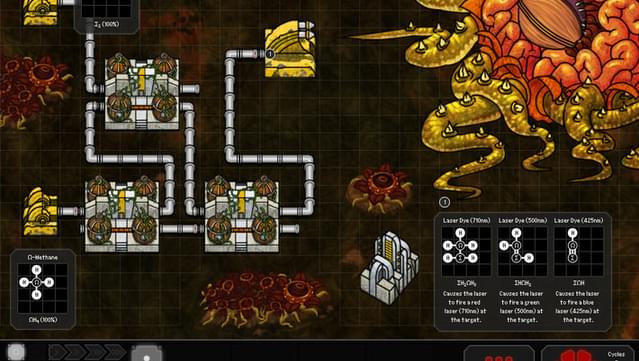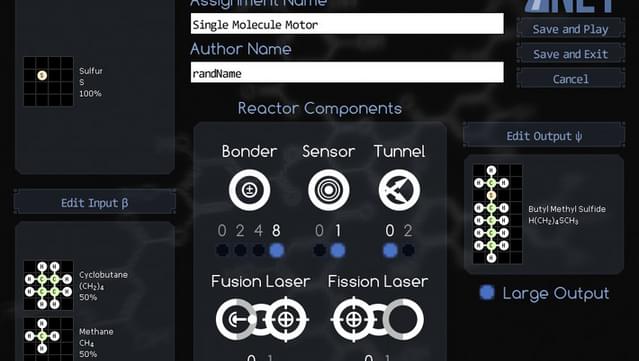Posted on: April 27, 2012

QC
Verified ownerGames: 619 Reviews: 2
An experiment in confusion, and well worth it.
Frankly it's surprising that a game like this exists. First off a game devoted completely to the construction and deconstruction of chemical compounds. Meanwhile you interact with an interface that is about 3 parts logic network design and one part troubleshooting. That probably isn't the best way to explain it, but still, for a game this creative, explanations only dull the experience. This is a hard game to start off with. Thankfully there is a tutorial level, though it takes some getting used to the first time in because you can't understand how everything works. (For new players: In each corner is a chemical combination on a four by four grid. On the left, your inputs, you grab and carry a chemical. On the right, the outputs, you must match the placement on the grid representing that corner. Treat it as much like a logic network as you can, making sure that there are designated commands to input and output, as well as grab/drop (Carry function), motion of elements (Logic pathway), rotation of your elements (Store/Replace) and combine or separate (Logic adder or subtractor). This gives you a a head start to understanding the game, but that's only the most basic ideals. Again, you take a component from the left and alter it to an acceptable form to output on the right. To do this you build two pathways that carry and drop for you, and they also work as switches, meaning they create every bit of interaction inside themselves. The puzzle becomes how to take something like carbon dioxide and hyrdrogen, transforming it into Carbon and Water. Aside from doing the creation, you soon have to discover that you need more than just one network to do what you need, in game your constructive networks are called Reactors. And these will come into your troubleshooting part. Issues can and will arise, and it takes a while to build every network. Meanwhile, you have to manage a number of different reactors, making sure that they receive and output what they need. The reactions will stop if you let two separate elements collide, and it'll stop if the outputs aren't being used by the next reactor in line. However, the method is up to you, the order is up to you, and while at times the game will ask you to do things a certain way, later on you have to decide for yourself what the best route is. Do you create everything in one reactor and output them? Or do you try to split up the different tasks over multiple reactors to try and get the quickest solution? While there is a story to this game, it doesn't matter a whole lot other than to get an idea of just what is happening while you get into the game, from the struggles of the company you have been hired into and the nervous observations of a new engineer on a sometimes deadly job. You're here for the challenge, and even though it'll sometimes take you as long as half an hour to set up and finish one puzzle, you'll be too enthralled to pull away from it.
Is this helpful to you?
